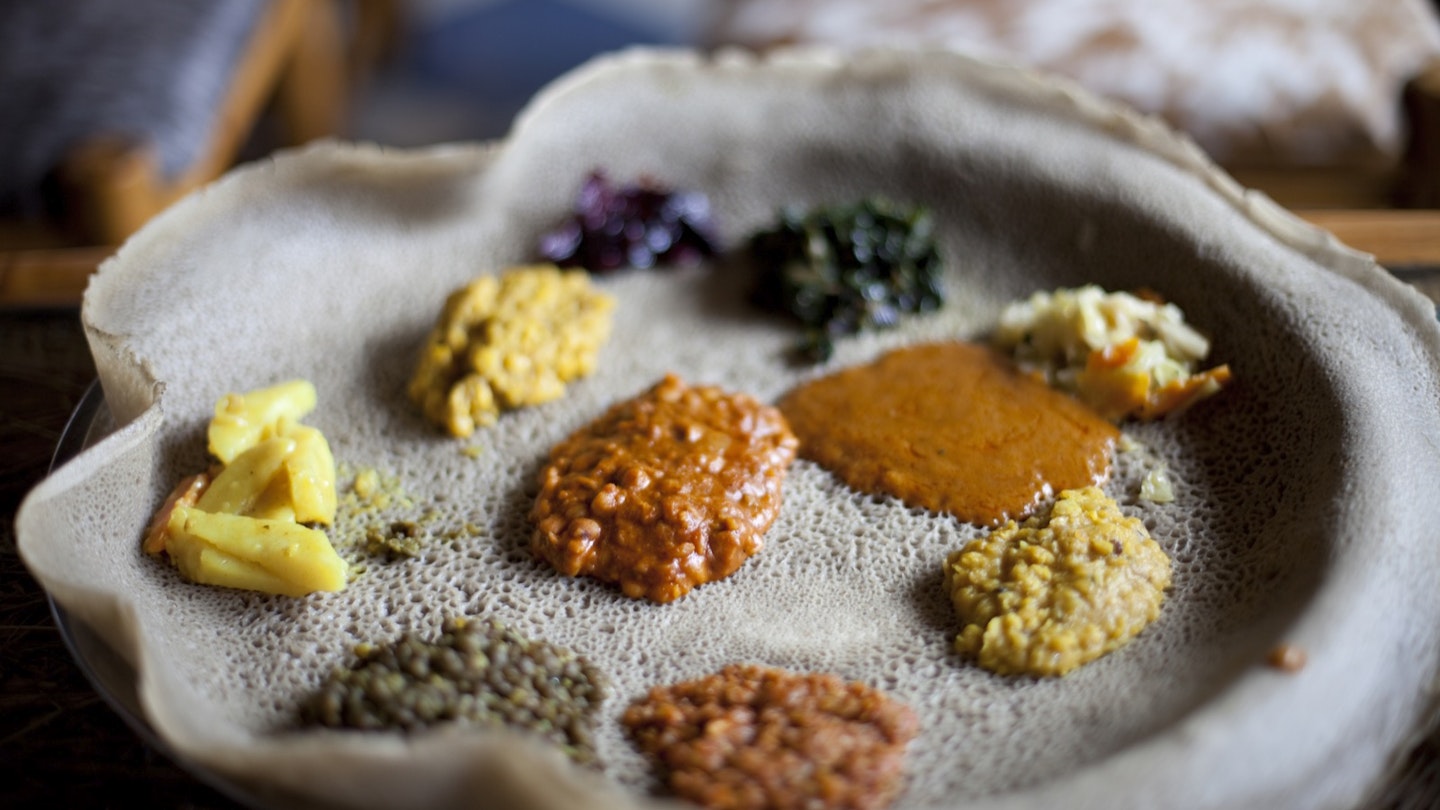If you want to try your hand at a recipe that isn't a merely a dish, try injera: a pancake of countrywide proportions.
What is it?
Made with the native grain teff, injera is the base of almost every Ethiopian meal (and the key utensil too!)
Origins
It’s thought that teff may have been cultivated as early as the first millennium BC by Pre-Aksumites in what is now northern Ethiopia, though there is no evidence of it being used to manufacture injera until the late 5th or 6th century AD. By the 13th century injera was a dietary staple, along with many of the dishes still popular in the country today. Early injera was baked on clay mitads (large clay discs) placed over an open flame.

Ingredients (makes 5 injera)
3⁄4 cups teff, ground
1 cup water
salt, to taste
1⁄4 cup vegetable oil, for greasing the skillet stews of your choice
How to cook
1. Mix the teff with the water in a bowl and let it stand at room temperature covered with a dish towel. Leave until it bubbles and has turned sour, which may take up to 3 days (occasionally overnight is enough time).
2. When the fermenting mixture has the consistency of a very thin pancake batter, stir in salt a pinch at a time until you can just start to detect its taste.
3. Lightly oil a 20cm (8in) or larger skillet and heat over a medium heat.
4. Pour just enough batter into the skillet to cover the bottom.
5. Cook briefly, until bubbles form and the edges start to lift from the pan. Hint: never flip the injera, and don’t let it brown.
6. Remove from pan and allow to cool. Use foil or cling film wrap to avoid successive injera sticking together when stacking.
7. Serve with the stew of your choice

Tasting notes
Slightly bitter and rubbery to the touch, injera never fails to make an impression. It usually arrives at your table in two guises: the first as a pancake filling your plate, on top of which are piled your chosen mains; the second, as a bit of a back-up, rolled up on a separate plate looking much like a hot towel on a plane.
Injera is also the main instrument in dining, with patrons ripping off sections of it to use to grab portions of the dishes riding atop it, such as doro wat (chicken stew), minchet abesh (thick minced-meat stew topped with a boiled egg) and kitfo (warmed, but not cooked, minced beef with butter and spices). Its spongy nature is also great for soaking up leftover juices.
Other recipes in this series
Greek avgolemono
Chennai Chicken 65
Italian tagliatelle al ragu
Have you recreated any of the dishes featured in this series so far? Share your pictures with us on Twitter and Instagram by tagging @lonelyplanet. For more great recipes, check out Lonely Planet’s book The World’s Best Super Foods.











